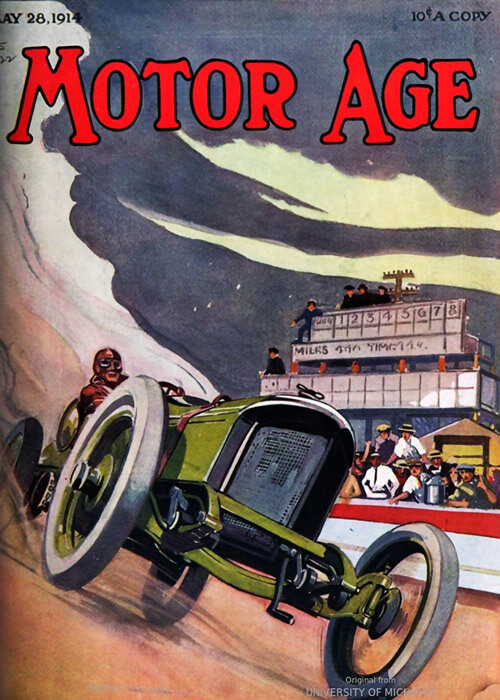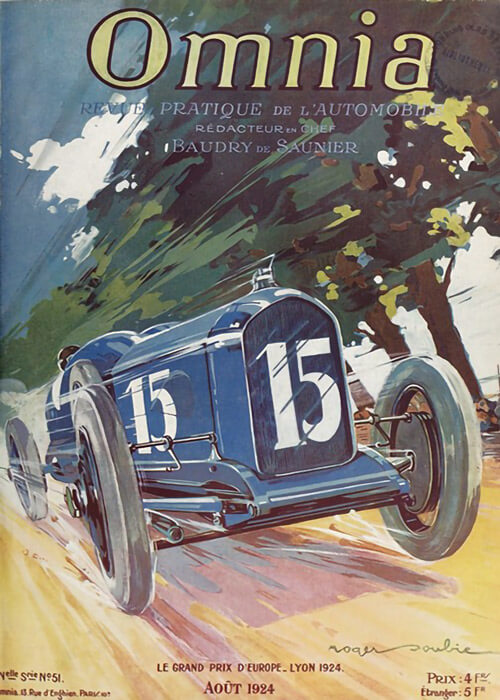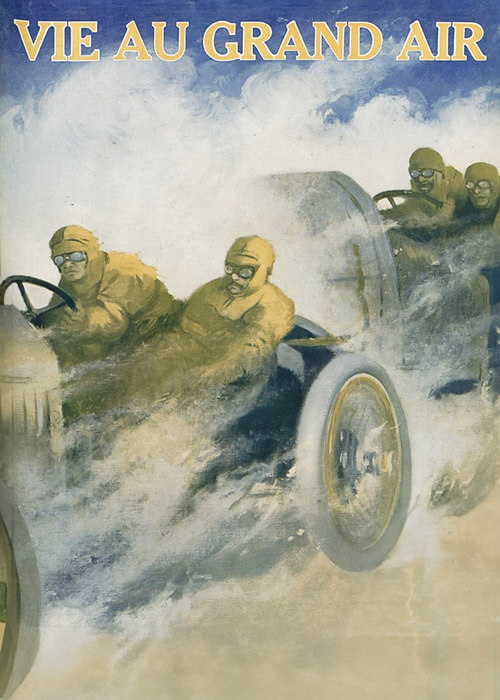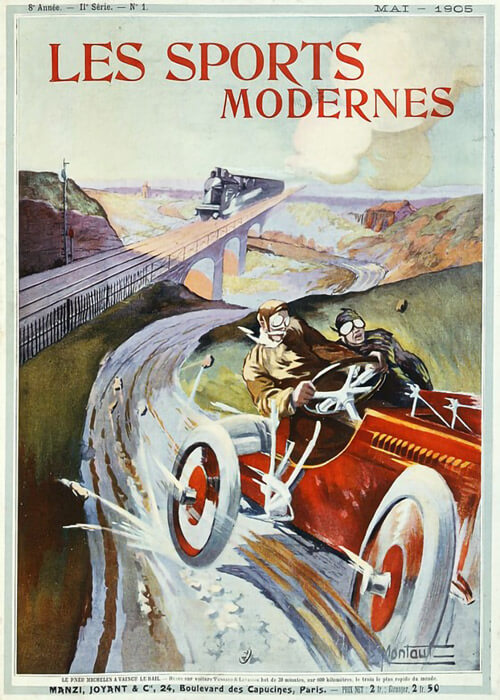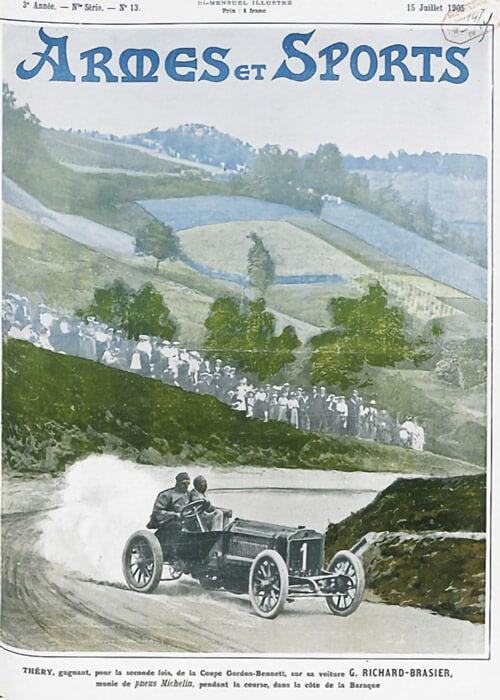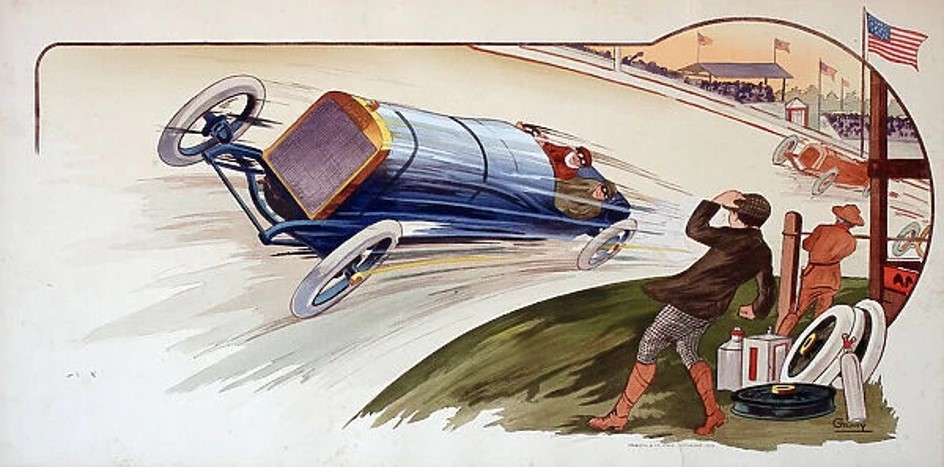
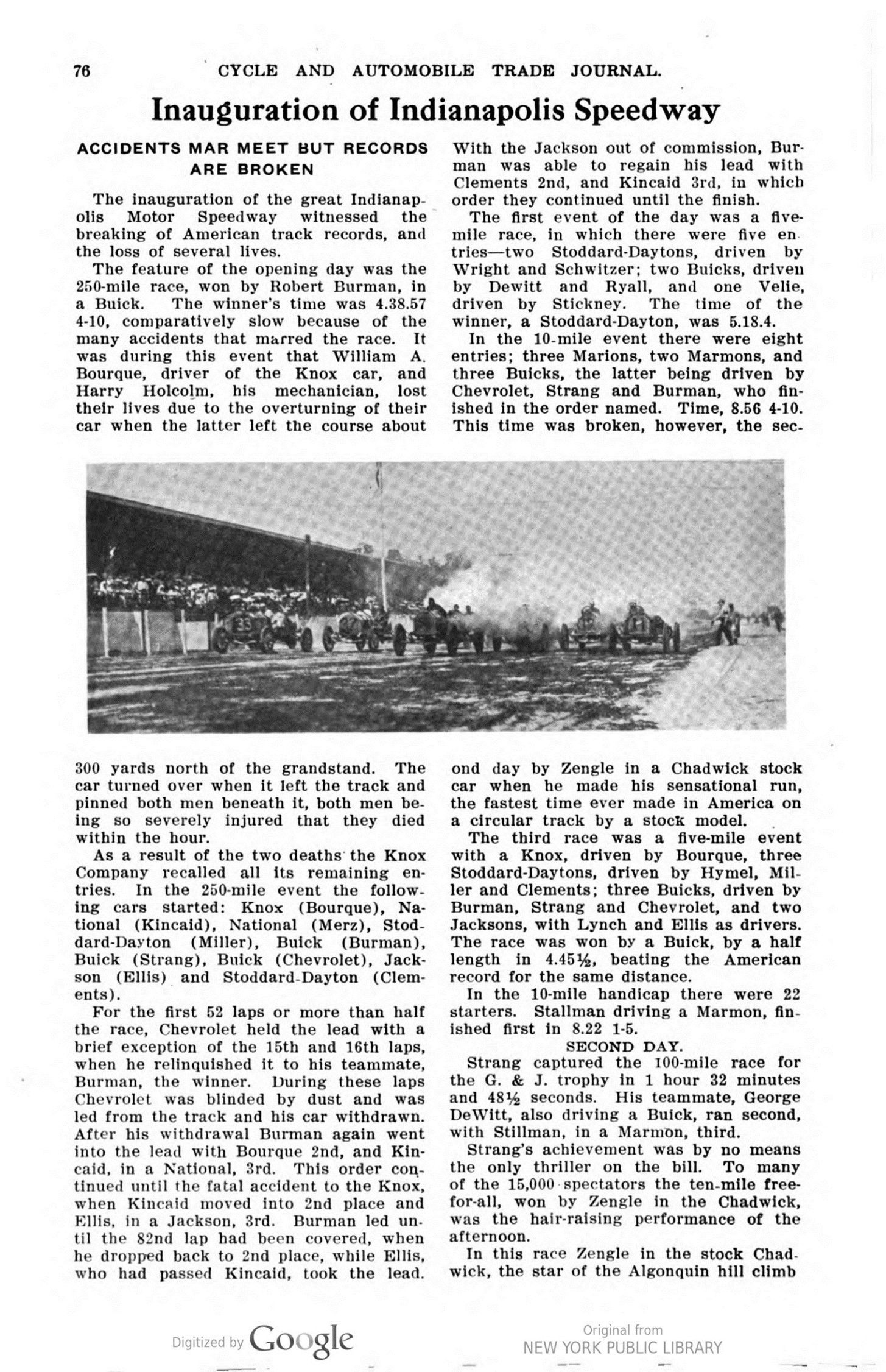
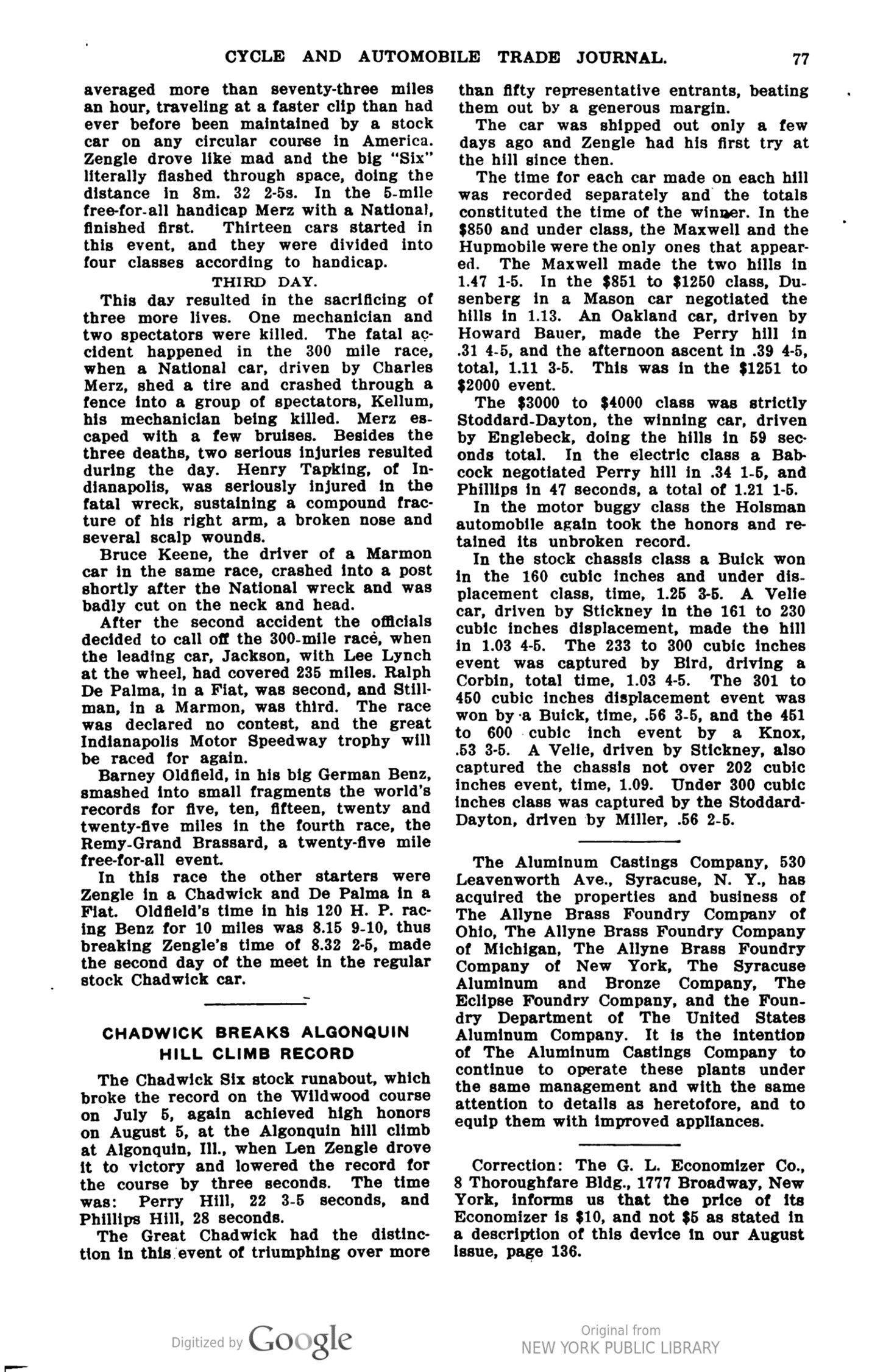
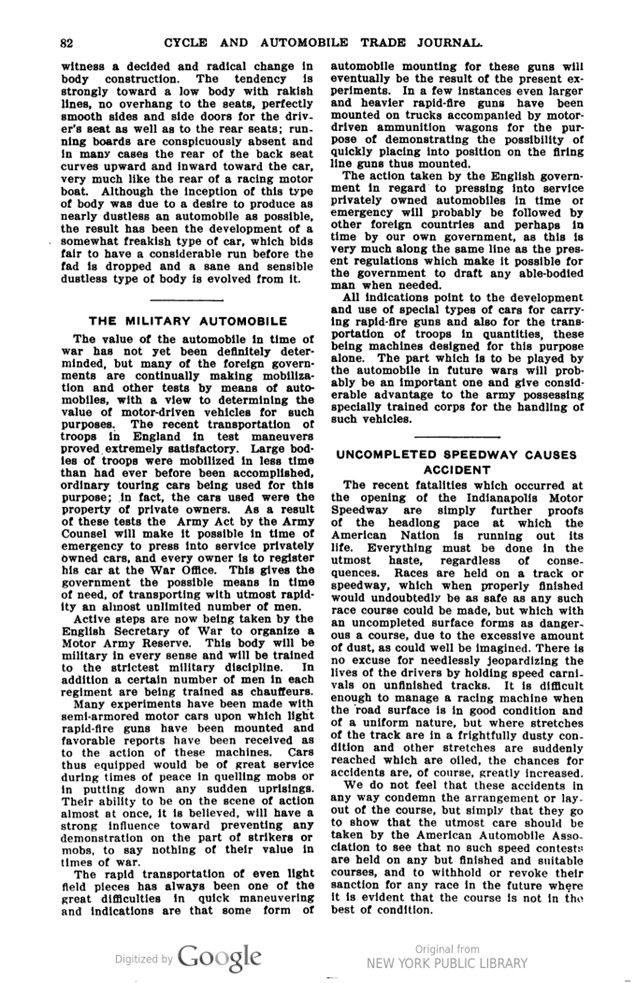
Text and jpegs by courtesy of hathitrust.org www.hathitrust.org, compiled by motorracinghistory.com
CYCLE AND AUTOMOBILE TRADE JOURNAL, Vol. XIV, No. 3, September 1, 1909
Inauguration of Indianapolis Speedway
ACCIDENTS MAR MEET BUT RECORDS ARE BROKEN
The inauguration of the great Indianapolis Motor Speedway witnessed the breaking of American track records, and the loss of several lives.
The feature of the opening day was the 250-mile race, won by Robert Burman, in a Buick. The winner’s time was 4.38.57 4-10, comparatively slow because of the many accidents that marred the race. It was during this event that William A. Bourque, driver of the Knox car, and Harry Holcolm, his mechanician, lost their lives due to the overturning of their car when the latter left the course about 300 yards north of the grandstand. The car turned over when it left the track and pinned both men beneath it, both men being so severely injured that they died within the hour.
As a result of the two deaths the Knox Company recalled all its remaining entries. In the 250-mile event the following cars started: Knox (Bourque), National (Kincaid), National (Merz), Stoddard-Dayton (Miller), Buick (Burman), Buick (Strang), Buick (Chevrolet), Jackson (Ellis) and Stoddard-Dayton (Clements).
For the first 52 laps or more than half the race, Chevrolet held the lead with a brief exception of the 15th and 16th laps, when he relinquished it to his teammate, Burman, the winner. During these laps Chevrolet was blinded by dust and was led from the track and his car withdrawn. After his withdrawal Burman again went into the lead with Bourque 2nd, and Kincaid, in a National, 3rd. This order continued until the fatal accident to the Knox, when Kincaid moved into 2nd place and Ellis, in a Jackson, 3rd. Burman led until the 82nd lap had been covered, when he dropped back to 2nd place, while Ellis, who had passed Kincaid, took the lead.
With the Jackson out of commission, Burman was able to regain his lead with Clements 2nd, and Kincaid 3rd, in which order they continued until the finish.
The first event of the day was a five-mile race, in which there were five entries—two Stoddard-Daytons, driven by Wright and Schwitzer; two Buicks, driven by Dewitt and Ryall, and one Velie, driven by Stickney. The time of the winner, a Stoddard-Dayton, was 5.18.4.
In the 10-mile event there were eight entries; three Marions, two Marmons, and three Buicks, the latter being driven by Chevrolet, Strang and Burman, who finished in the order named. Time, 8.56 4-10. This time was broken, however, the second day by Zengle in a Chadwick stock car when he made his sensational run, the fastest time ever made in America on a circular track by a stock model.
The third race was a five-mile event with a Knox, driven by Bourque, three Stoddard-Daytons, driven by Hymel, Miller and Clements; three Buicks, driven by Burman, Strang and Chevrolet, and two Jacksons, with Lynch and Ellis as drivers. The race was won by a Buick, by a half-length in 4.4542, beating the American record for the same distance. In the 10-mile handicap there were 22 starters. Stallman driving a Marmon, finished first in 8.22 1-5.
SECOND DAY.
Strang captured the 100-mile race for the G. & J. trophy in 1 hour 32 minutes and 4812 seconds. His teammate, George DeWitt, also driving a Buick, ran second, with Stillman, in a Marmon, third.
Strang’s achievement was by no means the only thriller on the bill. To many of the 15,000 – spectators the ten-mile free-for-all, won by Zengle in the Chadwick, was the hair-raising performance of the afternoon.
In this race Zengle in the stock Chad. wick, the star of the Algonquin hill climb averaged more than seventy-three miles an hour, traveling at a faster clip than had ever before been maintained by a stock car on any circular course in America. Zengle drove like mad and the big „Six“ literally flashed through space, doing the distance in 8m. 32 2-5s. In the 5-mile free-for-all handicap Merz with a National, finished first. Thirteen cars started in this event, and they were divided into four classes according to handicap.
THIRD DAY.
This day resulted in the sacrificing of three more lives. One mechanician and two spectators were killed. The fatal accident happened in the 300 mile race, when a National car, driven by Charles Merz, shed a tire and crashed through a fence into a group of spectators, Kellum, his mechanician being killed. Merz escaped with a few bruises. Besides the three deaths, two serious injuries resulted during the day. Henry Tapking, of Indianapolis, was seriously injured in the fatal wreck, sustaining a compound fracture of his right arm, a broken nose and several scalp wounds.
Bruce Keene, the driver of a Marmon car in the same race, crashed into a post shortly after the National wreck and was badly cut on the neck and head.
After the second accident the officials decided to call off the 300-mile race, when the leading car, Jackson, with Lee Lynch at the wheel, had covered 235 miles. Ralph De Palma, in a Fiat, was second, and Stillman, in a Marmon, was third. The race was declared no contest, and the great Indianapolis Motor Speedway trophy will be raced for again.
Barney Oldfield, in his big German Benz, smashed into small fragments the world’s records for five, ten, fifteen, twenty and twenty-five miles in the fourth race, the Remy-Grand Brassard, a twenty-five mile free-for-all event.
In this race the other starters were Zengle in a Chadwick and De Palma in a Fiat. Oldfield’s time in his 120 H. P. racing Benz for 10 miles was 8.15 9-10, thus breaking Zengle’s time of 8.32 2-5, made the second day of the meet in the regular stock Chadwick car.
